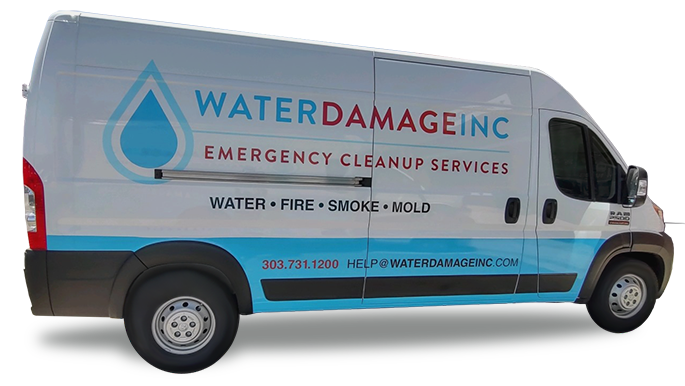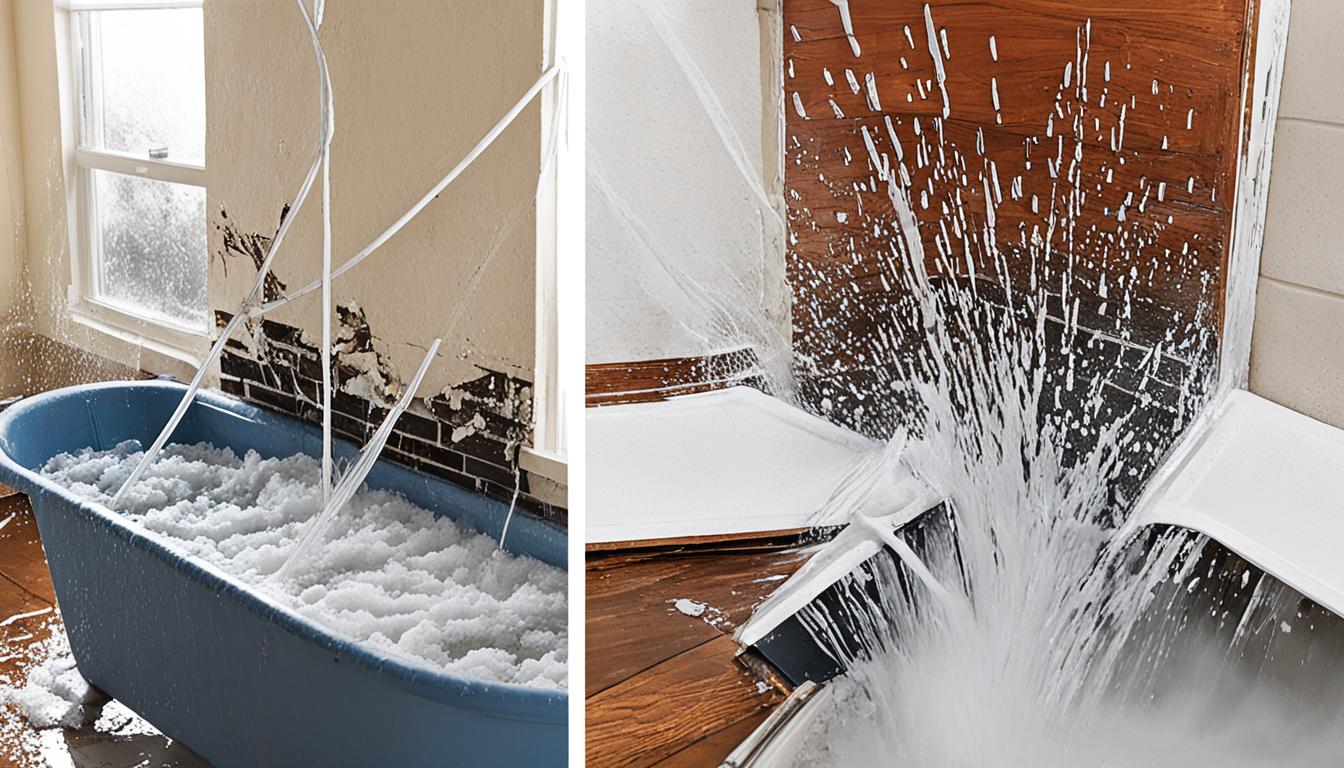When water gets into your home, does it threaten the structure’s safety? This question worries many homeowners. Water can cause serious damage, leading to high costs. But is a leak really structural damage?
Exploring this topic shows how water can harm your property. It can go from a minor issue to a major problem. This article will help you understand the risks of water leaks and how to deal with them.
Key Takeaways
- Approximately 14,000 U.S. residents face water damage emergencies daily.
- Costs for water damage restoration range from $1,500 to $3,500, while structural repairs may exceed $10,000.
- Mold growth can begin within 24 to 48 hours of water exposure, significantly impacting health and increasing repair costs.
- 60% of water leaks go undetected, leading to increased risks of structural damage over time.
- Regular maintenance checks can reduce the likelihood of severe water damage by up to 80%.
Understanding Structural Damage and Water Leaks
Structural damage and water leaks often go hand in hand. They pose significant risks to the safety and value of properties. It’s important to identify and mitigate these issues promptly.
What Constitutes Structural Damage?
Structural damage refers to any impairment that compromises the foundational and load-bearing elements of a building. Key components such as the foundation, load-bearing walls, and structural joints are designed to distribute and support the weight and forces acting on a building. Maintaining building code compliance is essential to ensure these elements perform their intended functions optimally. Signs of structural damage include:
- Cracks in walls
- Leaning windows
- Malfunctioning doors
Such indicators necessitate a thorough structural integrity evaluation to determine the extent of the damage and implement necessary repairs.
How Water Leaks Affect Structural Integrity
Water leaks exacerbate existing vulnerabilities in structural components by weakening materials over time. Moisture exposure can lead to rust in metal frameworks, rot in wooden elements, and mold growth within 24 to 48 hours. Water damage assessment is critical during these early stages to prevent extensive deterioration. Prolonged water infiltration, such as from continuous leaks or flooding, can significantly increase repair costs and require extensive remediation efforts:
- Cost of Mold Remediation: Adds $500 to $6,000 to repair costs based on the severity.
- Decrease in Property Value: Up to 25% or more due to unresolved water issues.
- Insurance Claims: Approximately 30% of claims are related to water damage.
Also, homes that suffer flooding might take 3 to 6 months to fully dry out. Structural damage can worsen if not addressed promptly. Failing to act within the first week of water exposure could potentially increase repair costs by 50%, highlighting the urgency of timely interventions.
Insurance companies classify water damage into three categories:
- Category 1 (Clean Water): Poses no substantial harm to humans.
- Category 2 (Grey Water): Contains some contamination, which may cause discomfort or illness.
- Category 3 (Black Water): Highly unsanitary and likely to cause severe illness.
The first 24 hours post-water exposure are critical in preventing further structural integrity evaluation issues and maintaining property stability. Addressing water leaks and their resulting damage quickly and efficiently can save homeowners from significant financial and physical distress.
Is a Water Leak Considered Structural Damage?
Whether a water leak is considered structural damage depends on its impact on a property’s key structures. Small leaks that don’t harm load-bearing parts might not be seen as structural. But, if ignored, they can cause a lot of damage. Leaks that harm the foundation, walls, or roof joists are seen as structural damage.
Signs of structural damage from water leaks include leaning windows and doors, and trouble opening them. You might also see corrosion or rust on metal foundations. This damage not only weakens the building but also makes it unsafe and uninhabitable.
Preventing water leaks is key to avoiding damage. Regular checks and upkeep help spot water damage early. Getting help from leak detection services can prevent expensive fixes. In fact, catching leaks early can cut repair costs by half.
Insurance policies for water damage vary a lot. The details of your policy can affect how claims are handled, including if a leak is seen as structural. It’s important for homeowners to check their insurance and talk to experts for a clear understanding.
Acting quickly and correctly can stop worse problems, like mold growth or building collapse. So, adding leak prevention to your property care routine is not just good—it’s necessary for keeping your home safe and valuable.
Conclusion
It’s key to spot water leaks early to avoid damage. Catching them early can stop small leaks from becoming big problems. These problems can harm a building’s structure and safety.
Water damage can happen fast, affecting walls and furniture. It’s vital to act quickly. Damage to the structure can show up in just an hour.
Mold can grow in 24 to 48 hours after water damage. This can be harmful to health and damage your property. Moisture can also cause wood rot, which is common in basements and bathrooms.
Wood rot can weaken the structure. Within a week, metal parts can rust and corrode. This can lead to leaks and structural failures.
Preventing water leaks is important for your property’s value and life. Regular checks and inspections can lower damage risk by up to 70%. Knowing the signs of water damage helps avoid costly repairs.
Regular inspections and maintenance are key. They keep your property safe and prevent big problems. If you need to file an insurance claim, knowing this can help you get the right compensation.
Waterproofing can stop leaks in about 60% of homes. This improves the structure’s strength. Being proactive about these risks keeps your property safe and valuable for years.
In summary, understanding water leaks and structural damage is critical. Early action and professional help are essential for your property’s health.







